Wessex Water Resilience Programme (2022)
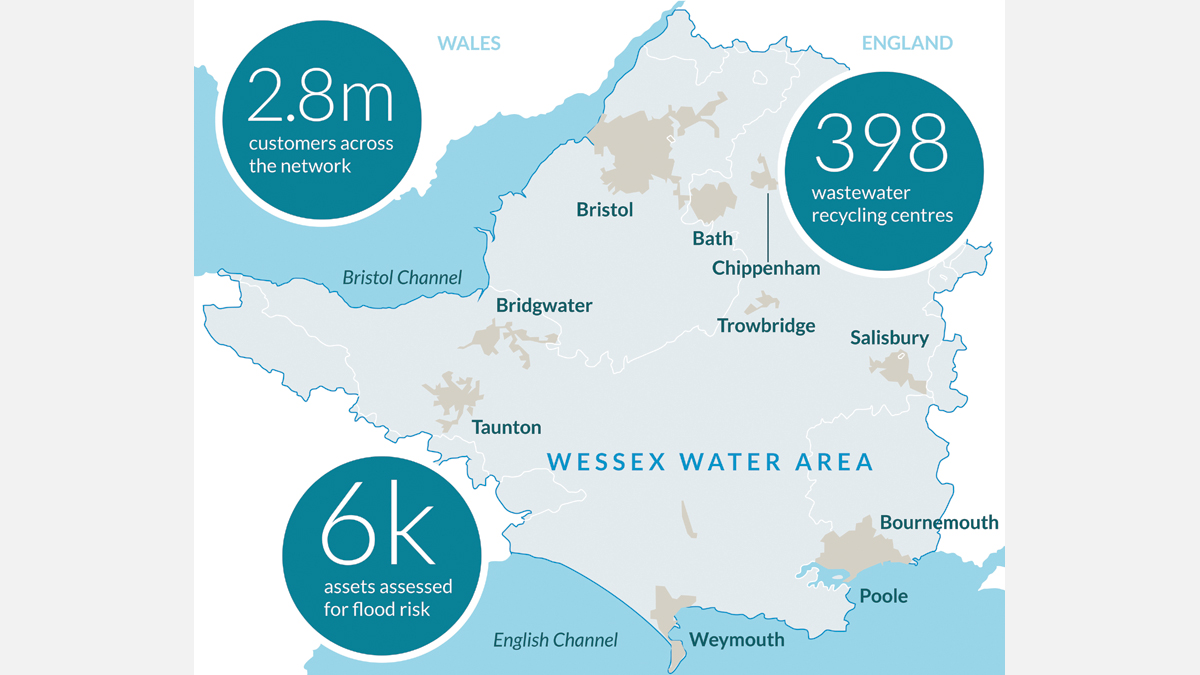
Wessex Water assets to be assessed - ICE Knowledge Hub 2022 - Courtesy of Mott MacDonald
Flood events in the United Kingdom during the summer of 2007 resulted in a loss of essential services and infrastructure not seen since World War II. Reportedly, over half a million people were left without water or electricity supply, with the estimated cost of the events exceeding £3.2 billion. The subsequent Pitt Review commissioned by the Government outlined a series of recommendations to improve flood resilience and response measures for the future; however similar events continued to make headlines, including the 2014 Somerset floods. A framework to produce Drainage and Wastewater Management Plans (DWMP) was commissioned by Water UK in collaboration with Defra, the Welsh Government, Ofwat, the Environment Agency, Natural Resources Wales, the Consumer Council for Water, ADEPT and Blueprint for Water. The framework was first issued in September 2018. DWMPs require organisations to work together to improve drainage and environmental water quality, and asset resilience. The production of a DWMP is a requirement for Price Review Ofwat submissions that inform integrated investment plans for future Asset Management Periods (AMP).
Opportunity
Collecting and analysing asset information is crucial during the planning stages of infrastructure delivery programmes. It is a resource-intensive and time-consuming exercise. Mott MacDonald and Wessex Water worked seamlessly as an integrated team, adopting an efficient and creative approach with innovative digital solutions and lean processes from survey to flood risk assessment, and development of flood resilience solutions for each site.
Following review of 6,000 assets, 4% needed detailed assessment and of those 125 were selected as a representative sample considering asset type, population served and other pre-defined criteria. Afterwards, each site was surveyed using Mott MacDonald bespoke data collection tablet apps to capture key asset information, including locations and thresholds of critical assets on each site, such as power sources, control panels, chemical storage areas, communications equipment and access roads.
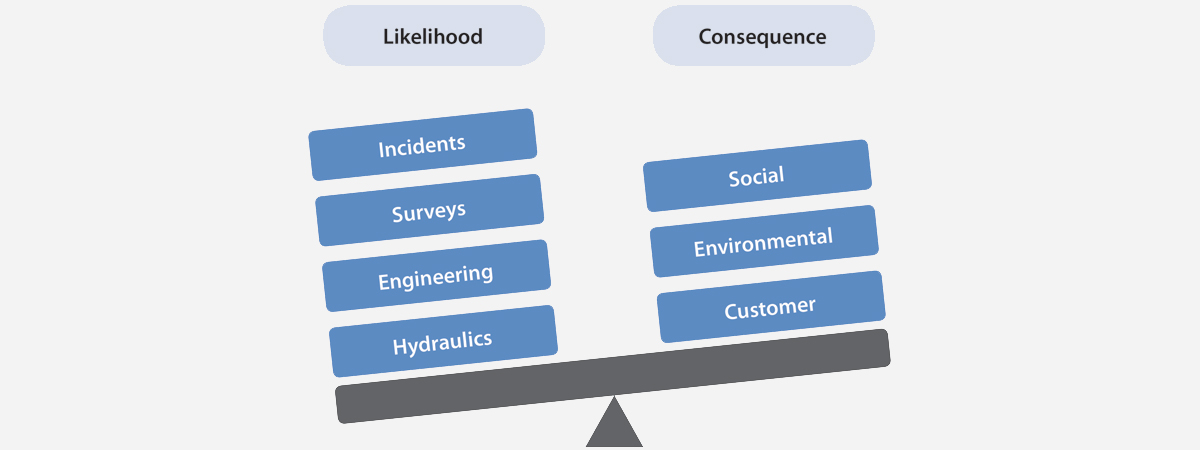
Courtesy of Mott MacDonald
Methodology
Phase 1: Data review of 6,000 assets including wastewater recycling centres and pumping stations
- The assets were plotted and analysed to establish which were at greatest risk of flooding from fluvial, tidal, and pluvial sources. Data requests to the Environment Agency were made to establish where hydraulic model extents coverage overlapped with asset locations to establish a flood risk matrix for the full data set and inform which sites should be selected as representative to progress to Phase 2 full assessment stage.
- A gap analysis of complementary data sets was completed – data searches for publicly available LiDAR, drone surveys, OS Mapping and detailed as-built asset plots in GIS from Wessex Water were collated and overlaid.
- A sewer risk model was developed by Wessex Water in 2020 as an objective way of identifying the most vulnerable parts of the sewer network, efficiently and with relative ease. It is based on inputs from condition surveys and other asset data, but it also includes an environmental designations layer that was identified as valuable to this assessment. Mott MacDonald re-used the environmental designations layer to inform a consequences of failure assessment and environmental harm risk rating for all assets that overlapped with an area more vulnerable to pollution should the asset fail.
- A flood risk matrix was developed for each site by considering all key contributing risk factors, including the level of risk, probability of flooding from fluvial, tidal or pluvial sources, site accessibility during flood events, environmental harm should the asset fail, and number of people impacted i.e., the population of the catchment served by the particular asset.
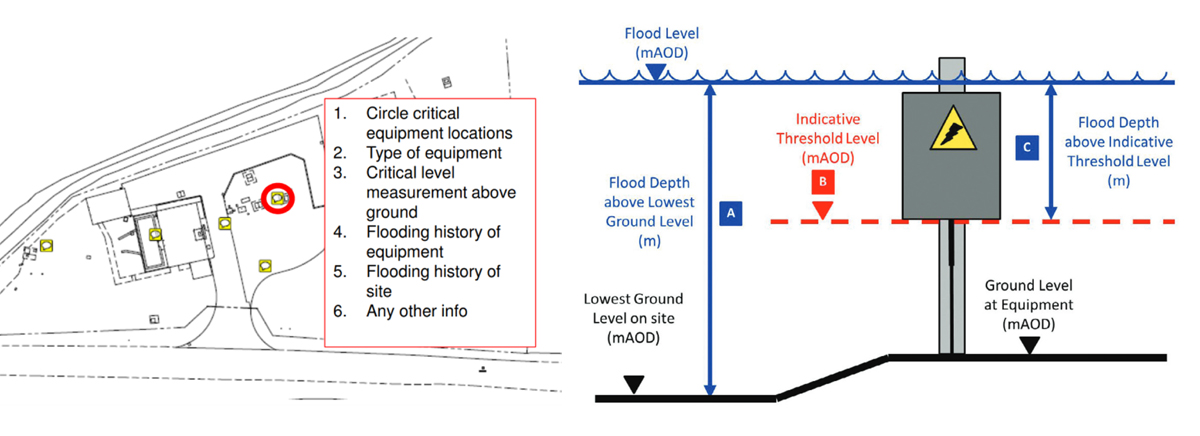
Courtesy of Mott MacDonald
Phase 2: Site visits and site-specific flood risk assessments
- Informed by analysis in Phase 1, 125 representative sites with a geographical spread across all three operational management areas run by Wessex Water were identified.
- Workshops to collaborate with the operational teams and gain their first-hand experience of flooding on the 125 sites were set up. This provided invaluable insights as some of the sites that were shown to be ‘at risk’ on databases had no known flood history in living memory. However, other sites that had no documented flooding history were reported by Operations to be very vulnerable.
- Working with Operations helped to identify ‘quick win’ sites that would be readily able to be adapted with flood resilience measures e.g., minor retrofit works to provide flood doors or cabinets as opposed to the more ‘difficult’ sites that were naturally low lying, fully within the flood plain, and vulnerable to widespread flooding on a relatively frequent basis. These ‘difficult’ sites require more strategic approaches, and possibly relocation in the coming years as climate change forecasts and sea level increases result in more frequent flooding challenges that would overwhelm individual asset resilience measures.
- Informed by site specific feedback from Operations, Mott MacDonald devised a schedule of site visits that enabled flood risk engineers to cover all selected sites in three consecutive weeks in summer 2021, despite the challenges presented by COVID-19.
- All data gathered was recorded directly into tablets using bespoke apps. It was stored on a Mott MacDonald secure cloud accessible to the tablets on site and to Mott MacDonald’s modellers in the office. Data was synced each evening enabling daily quality assurance checks to be completed.
Phase 3: Reporting & action planning
- Mott MacDonald documented flood risk findings alongside a desktop review of resilience policy statements and assessments completed by Wessex Water that complemented the DWMP overall strategy – shoreline management plan reviews, power resilience, communication resilience, business resilience and response/recovery including consequence management plans and emergency planning guidance.
- Outline solutions for all 125 representative sites were developed and their costings were scaled up to represent the full portfolio of sites based on their size and overall risk rating.
- The methodology was shared with the Wessex Water cost management team to enable the application of factors to include overheads, construction costs and inflation in their forecasts for capital investment over the coming AMP cycles – informing short, medium, and long-term plans to prioritise and implement the resilience measures required on site.
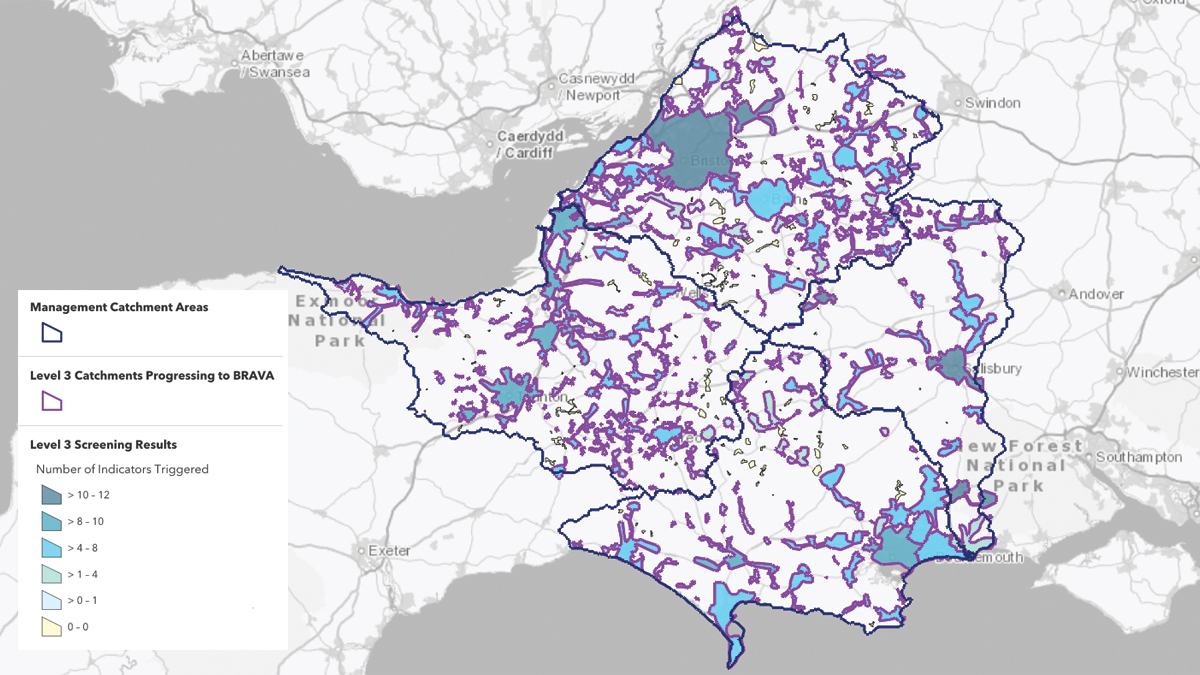
Wessex Water assets to be assessed – ICE Knowledge Hub 2022 – Courtesy of Mott MacDonald
Summary of solution
Bespoke apps, innovative digital tools and robust processes were developed and applied to streamline data collection, data processing, analysis, and assessment of flood risk from multiple sources. Through close collaboration with Wessex Water and applying digital innovation, Mott MacDonald made a bold decision to adopt a new and innovative approach and was able to fully assess 125 sites (i.e., 125 individual studies) in just six months. Each critical site asset was assessed for various flood return periods and scored by level of risk. Mott MacDonald also developed site specific resilience solutions and provided cost estimates for options to improve at-risk asset resilience. As the value of the approach became clear, Mott MacDonald was awarded an additional 47 coastal sites to assess.
The technology, digital innovations, and open architecture design of the tools allowed easy integration of information from multiple sources with different formats. This, combined with strong leadership, careful/agile planning, connected thinking, collaboration, a right-first-time mentality, and a seamless execution of the entire process by all parties involved, enabled Mott MacDonald to deliver a huge programme of work in a tight time frame and within budget during COVID-19 lockdowns.
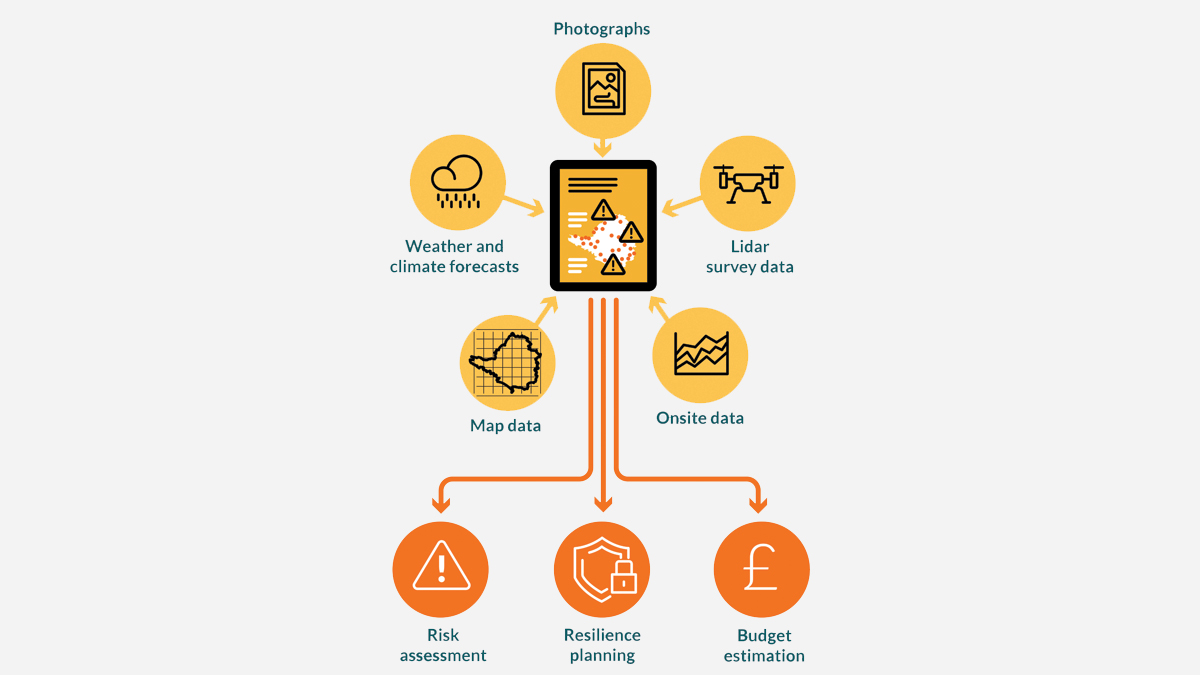
Data Collection App Visualisation, ICE Knowledge Hub 2022
Subsequently, the methodology was upscaled and applied on all at risk sites as part of Wessex Water DWMP. The bespoke digital tools and applications were flexible enabling information from a wide variety of sources to be collected and analysed, including photos, LiDAR, thresholds, climate forecasts and flood levels. The information collated was presented in a standardised report providing unique insights for each site and asset. The reports were automatically populated from a quality assured dataset enabling easy revision and export.
Outcome
The flood risk assessment exercises and findings gave great insight into the asset risks and challenges faced by Wessex Water now and in the future. They are extremely valuable in informing Wessex Water’s DWMP at the early stage of the infrastructure investment lifecycle. The outputs from the project ensured the decisions made by key stakeholders to invest in infrastructure programmes are more effective and integrated. This will help set the projects in a sustainable direction from the start, reducing waste during infrastructure delivery, improving carbon efficiency, and maximising their social, environmental, and economic outcomes.
While the system was developed to assess flood risk to wastewater assets, it can be readily adapted for other sites, e.g., roads, railways, bridges, power, and energy networks.

Comments and feedback
Water UK
“DWMPs will provide a picture of the actions we need to take, across England and Wales, to ensure our drainage and wastewater systems are sustainable, robust and resilient to future pressures such as population growth and climate change.”
George Eustice, the Secretary of State for the Environment, Food, and Rural Affairs
“Climate change is making the UK warmer and wetter, and we will be visited by extreme weather more frequently in the future…. we need to shift gears, to ensure we adapt and become more resilient.”
Rob Henderson, Wessex Water
“…a sterling effort, Motts have really produced the goods with this project and are to be congratulated.”
Graham Mortimore Managing Director, Mott MacDonald Water Consultancy Division
“…with a relentless focus on outcomes and collaboration, the team achieved fantastic productivity gains through combining smart data collation and automated toolkits.”



